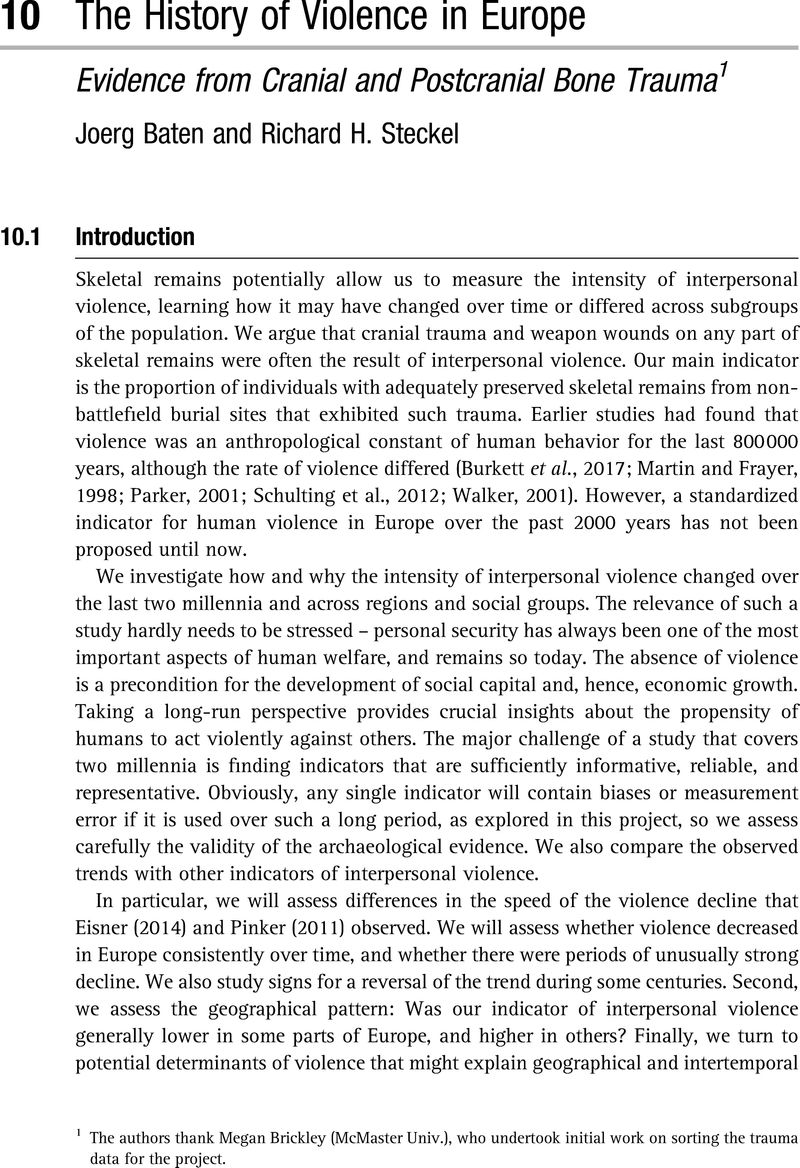Book contents
- The Backbone of Europe
- Cambridge Studies in Biological and Evolutionary Anthropology
- The Backbone of Europe
- Copyright page
- Dedication
- Contents
- Contributors
- Foreword
- Preface
- 1 The European History of Health Project
- 2 Contextual Dimensions of Health and Lifestyle
- 3 Measuring Community Health Using Skeletal Remains
- 4 The History of European Oral Health
- 5 Proliferative Periosteal Reactions
- 6 Growth Disruption in Children
- 7 History of Anemia and Related Nutritional Deficiencies
- 8 Agricultural Specialization, Urbanization, Workload, and Stature
- 9 History of Degenerative Joint Disease in People Across Europe
- 10 The History of Violence in Europe
- 11 The Developmental Origins of Health and Disease
- 12 Climate and Health
- 13 Multidimensional Patterns of European Health, Work, and Violence over the Past Two Millennia
- 14 Data Collection Codebook
- 15 Database Creation, Management, and Analysis
- Index
- References
10 - The History of Violence in Europe
Evidence from Cranial and Postcranial Bone Trauma1
Published online by Cambridge University Press: 29 October 2018
- The Backbone of Europe
- Cambridge Studies in Biological and Evolutionary Anthropology
- The Backbone of Europe
- Copyright page
- Dedication
- Contents
- Contributors
- Foreword
- Preface
- 1 The European History of Health Project
- 2 Contextual Dimensions of Health and Lifestyle
- 3 Measuring Community Health Using Skeletal Remains
- 4 The History of European Oral Health
- 5 Proliferative Periosteal Reactions
- 6 Growth Disruption in Children
- 7 History of Anemia and Related Nutritional Deficiencies
- 8 Agricultural Specialization, Urbanization, Workload, and Stature
- 9 History of Degenerative Joint Disease in People Across Europe
- 10 The History of Violence in Europe
- 11 The Developmental Origins of Health and Disease
- 12 Climate and Health
- 13 Multidimensional Patterns of European Health, Work, and Violence over the Past Two Millennia
- 14 Data Collection Codebook
- 15 Database Creation, Management, and Analysis
- Index
- References
Summary

- Type
- Chapter
- Information
- The Backbone of EuropeHealth, Diet, Work and Violence over Two Millennia, pp. 300 - 324Publisher: Cambridge University PressPrint publication year: 2018
References
- 4
- Cited by

